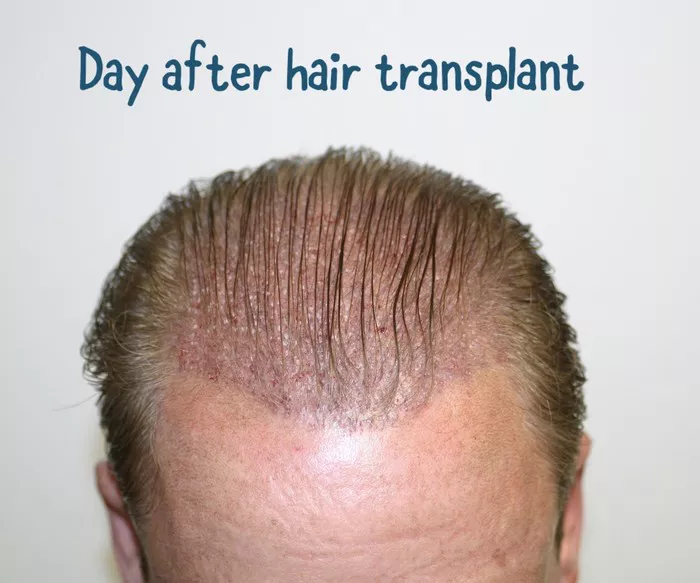Hair loss is a common concern for many individuals, and hair transplant surgery has emerged as a popular solution to address this issue. While hair transplant procedures offer promising results in restoring hair growth, it’s essential to understand that like any surgical intervention, they come with potential side effects and risks. In this comprehensive guide, we will delve into the various side effects associated with hair transplant surgery, empowering individuals to make informed decisions about their treatment options.
Understanding Hair Transplant Surgery
Hair transplant surgery, also known as hair restoration surgery, involves transferring hair follicles from one area of the scalp (donor site) to another (recipient site) to promote hair growth in areas experiencing thinning or balding. This procedure has evolved significantly over the years, with techniques such as Follicular Unit Transplantation (FUT) and Follicular Unit Extraction (FUE) becoming widely practiced.
FUT involves removing a strip of scalp tissue from the donor area, dissecting it into individual follicular units, and then implanting them into the recipient site. On the other hand, FUE involves extracting individual follicular units directly from the donor area using a small punch-like instrument and then implanting them into the recipient site.
While hair transplant surgery is generally considered safe and effective, it’s crucial for patients to be aware of the potential side effects and complications that may arise during or after the procedure.
Common Side Effects of Hair Transplant Surgery
1. Pain and Discomfort: Following hair transplant surgery, patients may experience some level of pain or discomfort in both the donor and recipient areas. This discomfort is typically managed with pain medications prescribed by the surgeon and tends to subside within a few days to a week post-surgery.
2. Swelling: Swelling of the scalp, particularly in the forehead and around the eyes, is a common side effect of hair transplant surgery. This swelling is usually temporary and resolves within a few days.
3. Bruising: Some patients may experience bruising around the donor and recipient areas following hair transplant surgery. This bruising is typically mild and resolves on its own within a week or two.
4. Itching and Tingling Sensations: As the scalp heals, patients may experience itching and tingling sensations in both the donor and recipient areas. This is a normal part of the healing process and usually subsides within a few weeks.
5. Scab Formation: Scab formation at the recipient site is common after hair transplant surgery as the newly implanted follicles heal. It’s essential for patients to follow their surgeon’s post-operative care instructions to minimize scab formation and promote proper healing.
6. Shock Loss: Shock loss, or temporary shedding of existing hair in the recipient area, is a common side effect of hair transplant surgery. This occurs as a response to the trauma of the procedure but is usually temporary, and the hair typically regrows within a few months.
7. Infection: Although rare, infection is a potential complication of hair transplant surgery. Patients are typically prescribed antibiotics to reduce the risk of infection, and it’s essential to follow proper post-operative care guidelines to minimize this risk.
8. Numbness or Lack of Sensation: Some patients may experience temporary numbness or lack of sensation in the donor or recipient areas following hair transplant surgery. This is typically temporary and resolves as the scalp heals.
9. Scarring: While modern hair transplant techniques aim to minimize scarring, some degree of scarring may occur, particularly with FUT procedures where a strip of scalp tissue is removed. However, the scarring is usually minimal and easily concealed by surrounding hair.
10. Cysts: In some cases, cysts may develop at the site of hair transplantation. These cysts are usually small and benign, but they may require drainage or other treatment if they become problematic.
11. Unnatural Appearance: In rare cases, hair transplant surgery may result in an unnatural appearance due to factors such as improper graft placement or inadequate donor hair supply. This underscores the importance of choosing a skilled and experienced surgeon to perform the procedure.
12. Psychological Impact: While not a physical side effect, it’s essential to acknowledge the potential psychological impact of hair transplant surgery. While many patients experience a significant boost in self-confidence and satisfaction with their appearance following the procedure, others may struggle with unrealistic expectations or dissatisfaction with the results.
Conclusion
Hair transplant surgery offers a viable solution for individuals experiencing hair loss, but it’s essential to understand the potential side effects and risks associated with the procedure. By educating themselves about these potential complications and selecting a qualified and experienced surgeon, patients can mitigate risks and achieve successful outcomes. Ultimately, an open and honest dialogue between patients and surgeons is crucial in ensuring informed decision-making and satisfactory results in hair transplant surgery.


